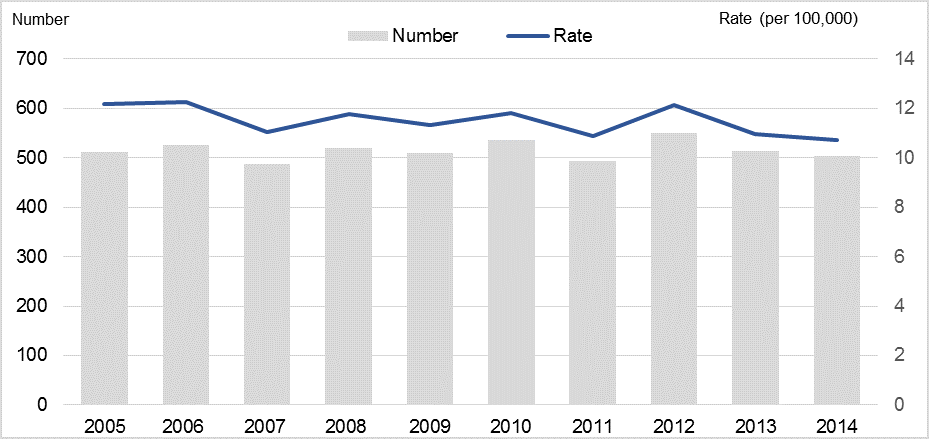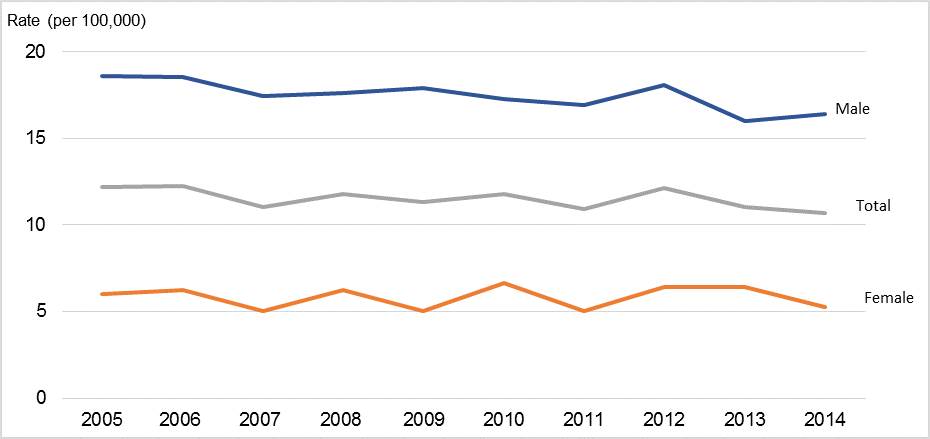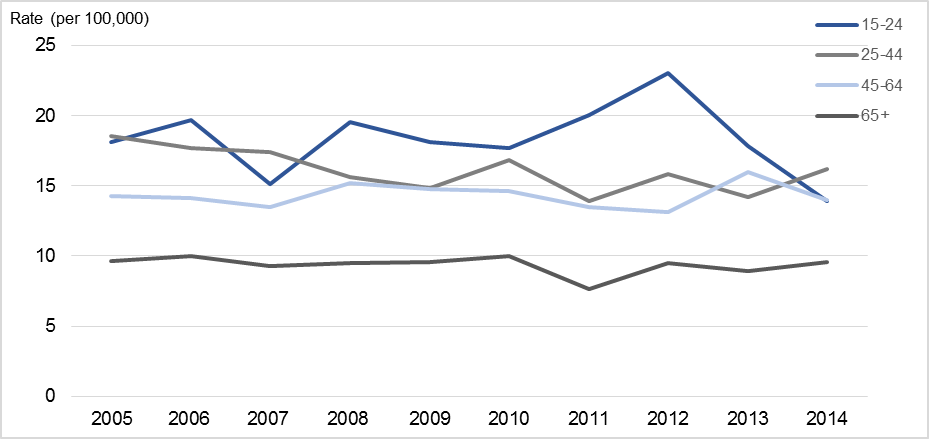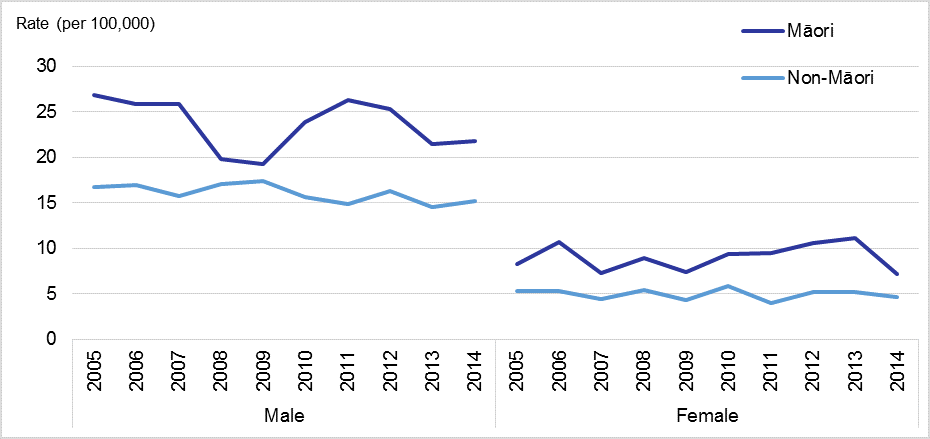This page provides high level suicide information for 2014 ahead of the annual Suicide Facts: Deaths and intentional self-harm 2014 publication.
This 2014 data is provisional. In New Zealand, a death is only officially classified as suicide by the coroner on completion of the coroner’s inquiry. Only those deaths determined as ‘intentionally self-inflicted’ after the inquiry will receive a final verdict of suicide. At the time of data extraction (17 November 2016), there were 27 deaths registered in 2014 that were still subject to coroners’ findings and where the cause of death had not yet been determined. Although these deaths are not included in the following data, some may later be classified as suicide.
Key findings
The rate of suicide is highest amongst males and Māori
In 2014, 504 people died by suicide in New Zealand, which equates to an age-standardised rate of 10.7 per 100,000 (Figure 1).
There were 378 male suicides and 126 female suicides (16.4 per 100,000 and 5.3 per 100,000 respectively). For every female suicide there were 3.1 male suicides (Figure 2).
Figure 1. Numbers and age-standardised suicide rates, 2005–2014

Figure 2. Age-standardised suicide rates, by sex, 2005–2014

The highest rate of suicide was among people aged 25–44 years (16.2 per 100,000). The rate of youth suicides in 2014 dropped below the rate of suicide among people aged 25–44 years for the first time since 2007, continuing the decreasing trend for this age group since in 2012 (Figure 3).
Figure 3. Age-standardised suicide rates, by life-stage age group (years), 2005–2014

In 2014, the rate of suicide among Māori was higher than among non-Māori for both males and females.
Among Māori males the suicide rate was 21.7 per 100,000; 1.4 times that of non-Māori. For Māori females, the suicide rate was 1.5 times that of non-Māori females (Figure 4).
Figure 4. Age-standardised suicide rates, by sex, for Māori and non-Māori

The rate of suicide has remained relatively stable in the ten year period to 2014
Over the ten year period 2005 –2014, the rate of suicide has remained relatively stable year to year.
Overall the rate of suicide has decreased slightly from its peak for this period in 2005 to the lowest rate for the period in 2014 (12.2 and 10.7 per 100,000 respectively).
Similar to the overall rate, the suicide rate for males has also generally decreased over this period. Over these ten years, the rate for males has been at least 2.5 times that for females.
Data table
A table of data containing provisional numbers and rates of suicide by sex and ethnic group (2005–2014) can be found in the downloadable file.
More detailed information will be provided in the Suicide Facts: Deaths and intentional self-harm hospitalisations 2014 publication to be released in 2017.
